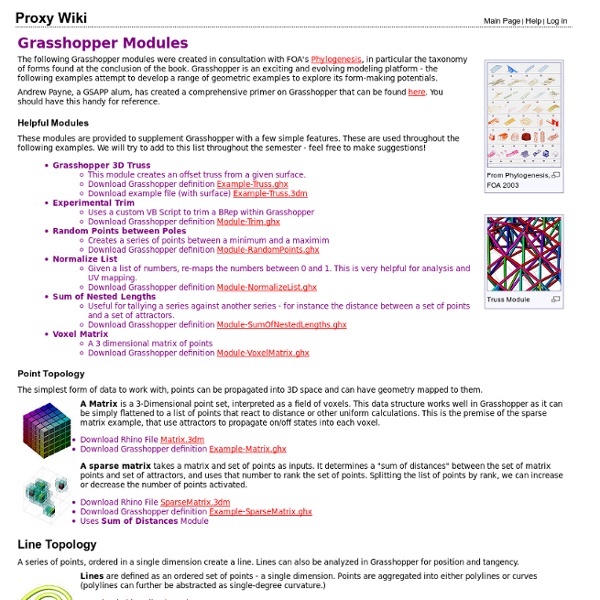Grasshopper Modules - Proxy Wiki

Fast 3d slicer
Ive worked all the day in this definition and I hope you like it. With this you can: -make ribs with notches -use the sliders to specify the x and y spacing of a rectangular grid or -use a custom grid (for this you just need 2 sets of lines) -specify the thickness of the material -atomatically place and order the ribs with labels for cut -use a 3d guide for construction -Run or stop the definition It has torus example inside with the custom grid option on. For now (and its just today) all the geometry I sliced worked perfectly. Any suggestions will be very welcome!
Related:
Related:



